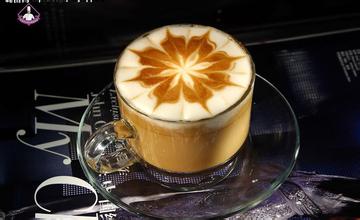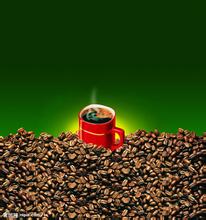Dominica Santo Domingo coffee with a pure and soft aroma
Unlike coffee produced in Haiti, most of the coffee grown in the Dominican Republic has been washed, which is a symbol of high quality. Miniga Coffee uses a washing method to treat coffee beans, so that the quality of treated coffee beans is more guaranteed. The coffee beans treated by washing method retain more original flavor than the drying method, and the aroma is pure and soft.
Carefully selected in this way, the high-quality coffee of Dominica exudes a faint aroma and gives a faint fruity aroma, with a lingering finish and a smooth palatability. in the early 18th century, coffee was introduced to Domiga from Martinique. The northern region represented by Shebao and the southern region, including Okayabani Santo Domingo, produce fine coffee. Among them, the coffee produced by Santo Domingo and Barney, which is almost synonymous with domiga coffee, is a world-famous high-quality coffee. Santo Domingo coffee is characterized by freshness, elegance, fullness, excellent acidity and pleasant aroma, so it is worth it. The selection of Dominican coffee is usually done manually. The main basis for selection is according to the fullness of coffee particles, whether it is uniform, and then grade it. Generally speaking, coffee with full and uniform grains is easier to preserve. Only the fullest and most evenly grained coffee beans can be roasted to represent the best coffee in the country. The Dominican Republic is located in the east of the island of Haiti in the West Indies, bordered by the Republic of Haiti in the west, the Atlantic Ocean in the north and the Caribbean Sea in the south. With an area of about 49000 square kilometers and a population of 7.1 million, the Dominican Republic and the Republic of Haiti coexist on an island bordering Haiti. Like its neighbors, the Dominican Republic has a history of revolution and poverty, but now it has democratic elections and the country is relatively stable.

Important Notice :
前街咖啡 FrontStreet Coffee has moved to new addredd:
FrontStreet Coffee Address: 315,Donghua East Road,GuangZhou
Tel:020 38364473
- Prev

Are Aldumara coffee beans the top coffee beans in Mexico?
Mexicans are optimistic and enthusiastic, and it can also be seen from their coffee that the mellow Mexican coffee is not only loved by the native people, but also praised by many coffee connoisseurs. There are many ways to taste Mexican coffee, mainly divided into alcoholic and non-alcoholic practices. Non-alcoholic Mexican coffee often goes with milk. Put a cup
- Next

Santa Cruz Manor, a coffee-producing country in the Galapagos Islands, formed by volcanic eruptions
The Galapagos Islands are formed by volcanic eruptions, with tall volcanoes standing on the island, the highest on Isabella Island (Isabel), the largest in the archipelago, called Wolf Volcano (1707 meters), and the second highest is an extinct volcano, also on the island, Mount Asul (1689 meters). The natural lakes formed by some craters seem to be embedded in the summit of volcanoes.
Related
- Does Rose Summer choose Blue, Green or Red? Detailed explanation of Rose Summer Coffee plots and Classification in Panamanian Jade Manor
- What is the difference between the origin, producing area, processing plant, cooperative and manor of coffee beans?
- How fine does the espresso powder fit? how to grind the espresso?
- Sca coffee roasting degree color card coffee roasting degree 8 roasting color values what do you mean?
- The practice of lattes: how to make lattes at home
- Introduction to Indonesian Fine Coffee beans-- Java Coffee producing area of Indonesian Arabica Coffee
- How much will the flavor of light and medium roasted rose summer be expressed? What baking level is rose summer suitable for?
- Introduction to the characteristics of washing, sun-drying or wet-planing coffee commonly used in Mantenin, Indonesia
- Price characteristics of Arabica Coffee Bean Starbucks introduction to Manning Coffee Bean Taste producing area Variety Manor
- What is the authentic Yega flavor? What are the flavor characteristics of the really excellent Yejasuffi coffee beans?

